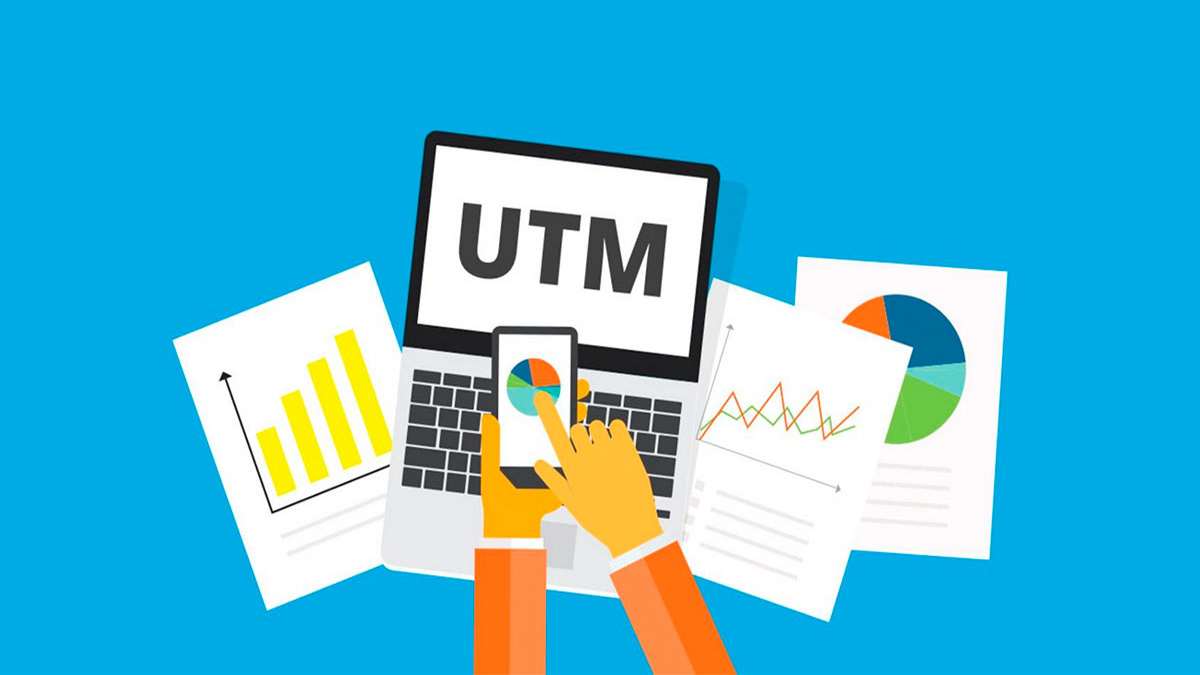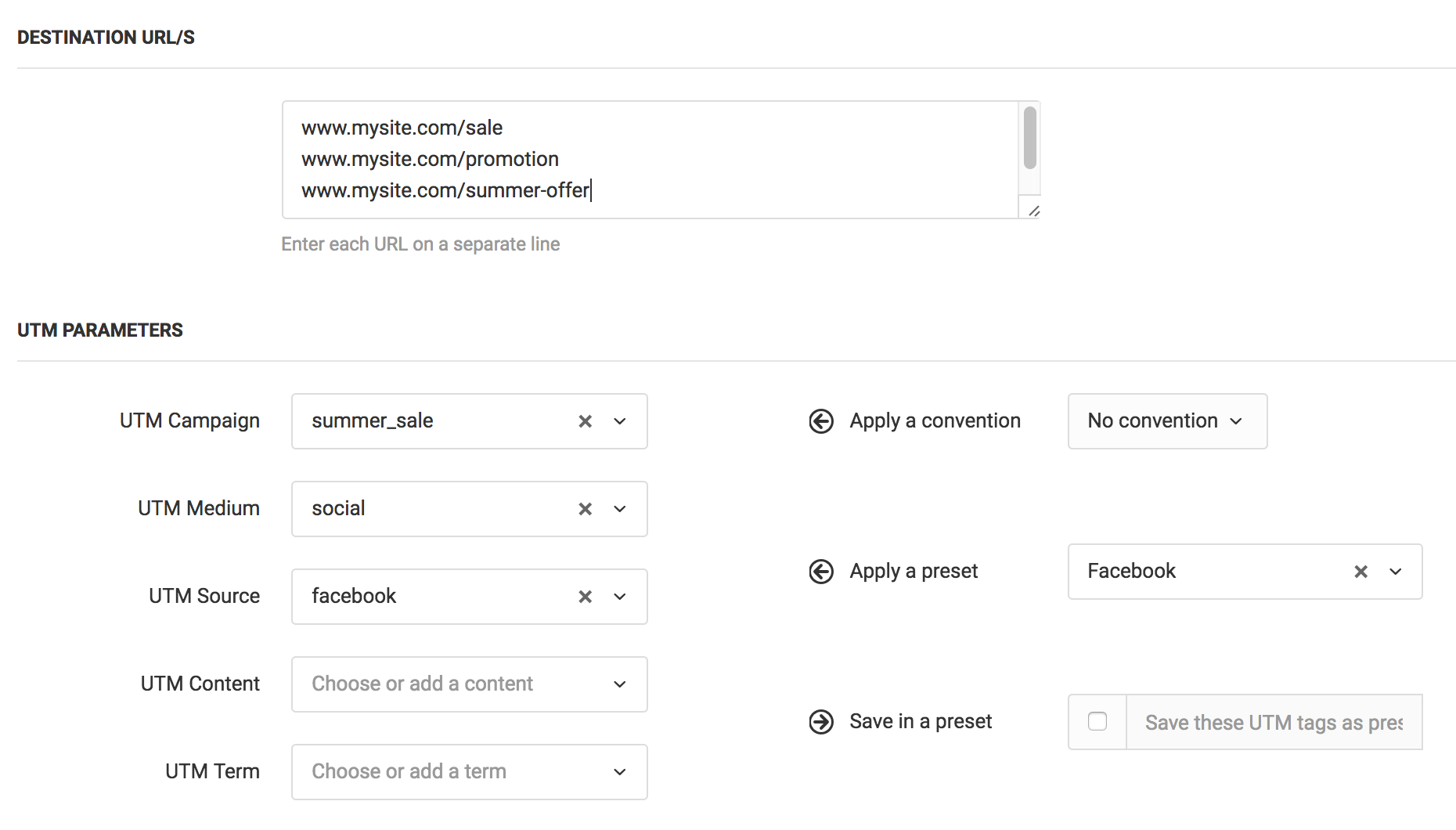What is UTM and how to use a URL Builder?
One of the main advantages of investing in Digital Marketing is the ability to measure the results of your campaigns. In this guide, we’ll help you learn what is UTM and use this URL builder get the most out of your advertising campaigns.
This allows you to evaluate the hits and misses of your strategy, providing data for the next actions to be more effective.
However, this information is not always automatically captured by platforms like Google Analytics without a UTM.
UTM is a feature that allows you to create URLs with tracking parameters.
The good news is that Google itself has a tool that allows you to add these parameters to your URLs.
These parameters will help you identify which page is being accessed the most, the behavior of the people accessing it, and various other fundamental information to understand the origin of your traffic and make more efficient campaigns.
If you want to learn what UTM is and how to use this resource to monitor the results of your digital actions, check out our content. Let’s go?

What is UTM?
To understand what UTM is, we first need to understand what a URL is. A URL is an acronym for Uniform Resource Locator.
This term is also known as the Electronic Address, an example being our own address: https://techshali.com.
These URLs can be customized for sales pages, landing pages, and various other types of pages.
Tracking these addresses is important to understand when and where a user has accessed one of your pages via a specific link.
UTM, Urchin Tracking Module, is a feature that allows you to create trackable URLs.
These are snippets of text that can be added to an email address to track it whenever it is clicked on.
These lines allow Google Analytics to show detailed results as to where a URL’s traffic is coming from.
The parameters are specifically designed to understand when a lead clicked on a link, which channel it came from, and a host of other details.
Therefore, if you want to monitor your traffic in an efficient way, using this resource it will be possible to evaluate the origin of the accesses in your promotional materials.
In other words, by creating optimized e-mail addresses it will be possible to determine the channel in which the person found and clicked on the link, what was the copy of the ad that generated the click, and whether it came from organic or paid media, among several other options.
How to create UTM?
UTM parameters follow a set format and order. Check out an example:
http://www.yourdomain.com?utm_source=facebook&utm_medium=paid_social&utm_campaign=summer_sale&utm_term=social_media&utm_content=video_adDespite being a defined text, the recommended way to create a URL with trackable parameters is just to access a UTM tool.
One of the most popular tools is Campaign URL Builder, offered for free by Google itself.
However, this platform does not offer an alternative to shorten links to make them more user-friendly.
Nevertheless, this tool has integration with the bit.ly website, allowing you to shorten links easily.
Get to know the UTM parameters
Check below each of the trackable parameters that can constitute a UTM and allow you to evaluate which links are the most effective in the channels of a business.
Campaign
The utm_campaign is the main item in a trackable URL, grouping various sources, media and content.
Example: utm_campaign=Techshali-for-whatsapp
Source
The utm_source is the item that determines the source of the traffic. It is through it that it will be possible to check the channel where a user came from.
It is common for the conversion to come from a website, landing page or social network, such as Instagram, Facebook, Twitter.
Example: utm_source=instagram
Medium
Different from the previous item, utm_medium defines the direct origin of the traffic is. With it you can know if a visitor came to your site via organic traffic, email marketing, affiliate link, paid media, etc.
Example: utm_medium=email
Content
The utm_content is used to define what is the content related to the link, this allows you to evaluate similar content for different audiences, and make ads with different formats and A/B tests.
It is important to understand that this is not a mandatory field for creation, so there is no need to differentiate the link by this information.
Example: utm_content=cta-a
Term
The utm_term is an item that is normally used to differentiate keywords used in paid search ads.
When running multiple ads, this item becomes very relevant because it allows you to differentiate the term that has had the most success converting leads.
Example: utm_content=ad keyword

How to track your UTM in Google Analytics
The trackable click results will be displayed in the campaigns area within the Google Analytics platform.
The links and their performance will be displayed on the platform through the parameters used by the URL.
Using the features within Google Analytics, you can filter your campaigns by the desired parameters.
To check the data from your campaigns follow these instructions:
- Click on the Acquisition item in the left menu.
- Click Campaigns.
- Click All campaigns.
- The platform will display a report with all the campaigns that were tracked.
- You can click on each of them to see information about traffic and even sales if you have e-commerce enabled in your Google Analytics account.
- In any of the traffic sources, you can see relevant metrics such as page views, bounce rate, goals, sales, and many others that can determine the effectiveness of your campaign.
Best practices when creating your trackable links
It is important to understand that there is no wrong way to generate trackable URLs, however, there are some tips that can help organize your analysis reports. Check out the main ones:
- Use only the parameters that are necessary.
- Because URLs get long, consider using a link shortener.
- All parameters need to be written in lowercase.
- Anyone who clicks on your link will have access to the names of the parameters used. So don’t write words and ideas that you don’t want other people to see.
- Consider using standard initial nomenclature. This is important because each URL will have multiple parameters, which can mess up your reports.
3 UTM Generators to use for your links
Check out the following selection of some of the top UTM generators available for free on the Internet.
1. Google Campaign URL Builder
As already mentioned, Google itself offers a free and complete tool to generate your trackable links.
Simple and practical, just access the link, and fill in the information with the URL and the desired parameters to create the UTM.
If you have a bit.ly account, you can also take advantage of a platform integration that generates shortened links directly to your bit.ly account through the Campaign URL Builder page.
2. UTM Generator – Resultados Digitais
Resultados Digitais, one of Brazil’s largest marketing and sales portals, has its own spreadsheet to generate UTM.
Unlike Google, the resource offered by Resultados Digitais is a spreadsheet that can be downloaded and used to generate your trackable links.
The main differentials of this alternative are having an automatic shortener and access to a bank with the UTMs generated by the spreadsheet.
3. UTM generator for campaigns
The Inbound Marketing portal maikon.biz has its own UTM generator for campaigns.
Through a web page, you can easily generate UTM for your campaigns, just like the tool offered by Google.
Just fill in the information in the form to use UTMs in Google Ads, Facebook Ads and Instagram Ads campaigns.
Its main differentiator is that it offers ready-made terms to optimize the creation of your trackable links.
Have you learned what UTMs are and how to use them?
Using UTMs is a fundamental requirement for anyone who wants to create very effective digital marketing campaigns.
If you want to optimize your results by generating lots of conversions, consider starting to use a professional online fulfillment tool.